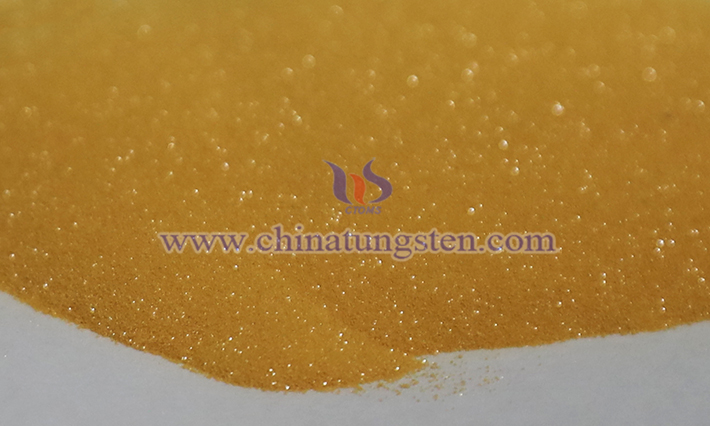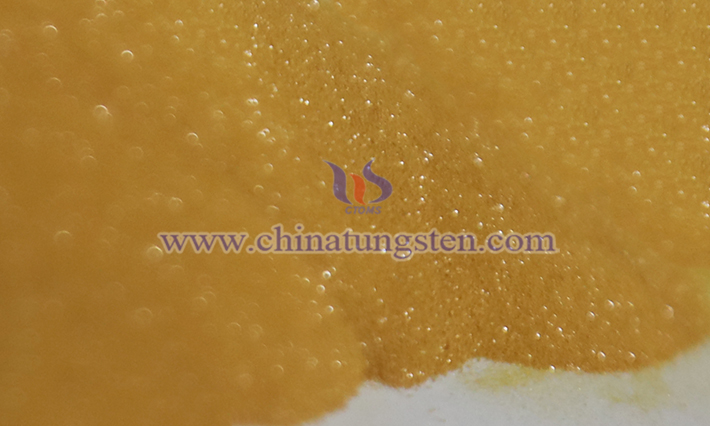What Are the Characteristics of Orange Tungsten Oxide?
- Details
- Category: Tungsten Information
- Published on Thursday, 13 February 2025 18:59
As a special form of tungsten oxide, orange tungsten oxide possesses a series of unique characteristics:

I. Color: The most prominent characteristic of orange tungsten oxide is its bright orange color. This color arises from defects, impurities, or the presence of low-valent tungsten ions in the crystal structure of tungsten oxide, giving it a highly recognizable appearance.
II. Density: Orange tungsten oxide has a density similar to conventional tungsten oxide, generally high, which provides it with a certain weight and stability in applications.
III. Specific Surface Area: Orange tungsten oxide boasts a high specific surface area, making it excel in high-tech applications such as catalysis, photoelectrics, and sensors. A high specific surface area means a larger reaction interface, which is crucial for improving catalyst efficiency and enhancing material adsorption properties.
IV. Catalytic Performance: Orange tungsten oxide can act as a catalyst or cocatalyst in various chemical reactions, facilitating the progress of these reactions.
V. Electrochromic Properties: Under specific conditions, orange tungsten oxide exhibits good electrochromic properties, meaning its color can reversibly change with the alteration of an electric field. This characteristic has potential applications in smart windows, automotive rearview mirrors, and other fields.

VI. Application Fields
Pigments and Colorants: Due to its unique orange color, orange tungsten oxide can be used as a pigment or colorant to provide various materials with bright colors. It has broad application prospects in ceramics, glass, coatings, and other fields.
Photoelectric Field: Orange tungsten oxide may also be applied in the photoelectric field, such as serving as the sensitive layer or electrode material for photoelectric detectors, solar cells, and other devices.
Lithium-ion Batteries: In lithium-ion batteries, it can be used as a negative electrode material or modifier to improve the battery's electrochemical performance and cycle stability.
Gas Sensors: In gas sensors, it can be utilized to detect specific gases due to its sensitivity to them.
Photocatalysis Field: It can be used in reactions such as photolysis of water for hydrogen production and degradation of organic pollutants.
- Chinatungsten Online: www.tungsten-oxide.com
- CTIA GROUP LTD: en.ctia.group
- Tungsten News & Price: www.ctia.com.cn
- Molybdenum News & Price: news.molybdenum.com.cn
- Tel.: 86 592 5129696; Email: sales@chinatungsten.com



 sales@chinatungsten.com
sales@chinatungsten.com